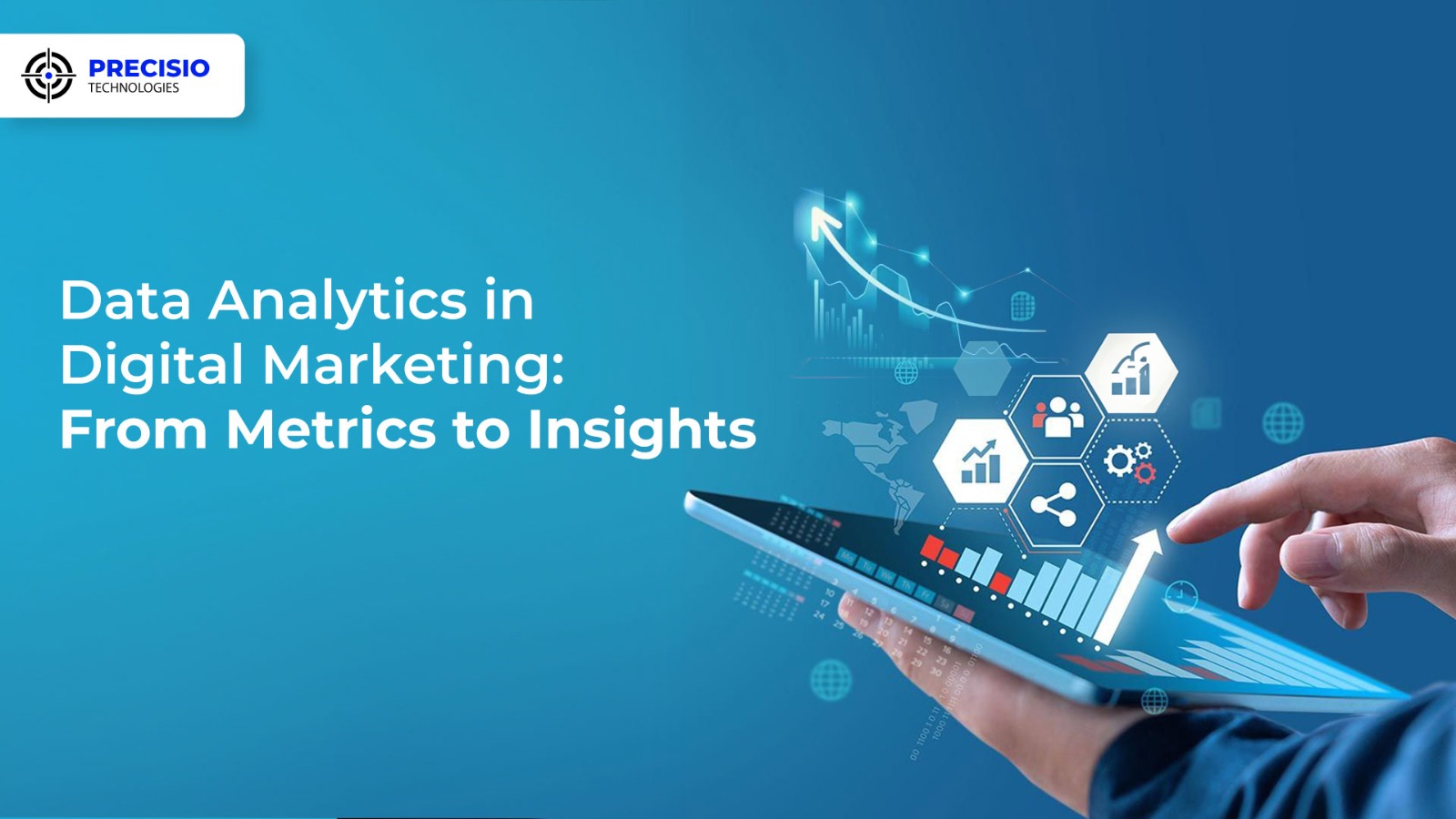
Data analytics has emerged as a powerful tool for shaping strategies, measuring success, and optimising campaigns. A deeper understanding of how data transforms raw metrics into actionable insights is essential for businesses aiming to thrive in a competitive market. This blog will explore the importance of data analytics in digital marketing, key metrics that should be tracked, and how valuable insights are derived from them.
Watch our latest video on YouTube:-
1. Importance of Data Analytics in Digital Marketing
The role played by data analytics in digital marketing cannot be overstated. Businesses are empowered by data-driven decisions that lead to more precise targeting and improved ROI. Through analytics, performance is monitored, customer behaviours are understood, and strategies are refined.
- Enhanced Customer Segmentation: Specific data points allow customer groups to be segmented based on preferences, demographics, and purchasing behaviour.
- Improved Campaign Effectiveness: Data-driven decisions help tailor marketing campaigns to better resonate with target audiences.
- Optimisation of Marketing Budget: Spending can be allocated more efficiently, ensuring higher returns and reduced costs.

2. Key Metrics to Track in Digital Marketing
- To harness the power of data analytics, the right metrics must be tracked. While different platforms may offer an abundance of data, focusing on core metrics ensures clarity and effective analysis.
Website Traffic Metrics
- Page Views: The total number of times a page has been viewed is measured, helping marketers understand content popularity.
- Unique Visitors: The number of distinct users visiting a site provides insights into the reach of a campaign.
- Average Session Duration: The average time spent on a site by visitors indicates the content’s engagement level.
Conversion Metrics
- Conversion Rate: The percentage of users who take a desired action (e.g., signing up for a newsletter or making a purchase) is analysed, reflecting the effectiveness of call-to-action elements.
- Bounce Rate: The rate at which visitors leave a site without further interaction is observed, signalling possible issues with user experience or content alignment.
Engagement Metrics
- Click-Through Rate (CTR): The number of users who clicked on an ad or link compared to the number of times it was shown is assessed, highlighting the ad’s appeal.
- Social Shares and Comments: Engagement levels are determined through interactions on social media, measuring how well content resonates with audiences.

3. From Metrics to Insights: Transforming Data for Strategy
The mere collection of metrics is insufficient; actionable insights must be derived to inform strategy. A few methodologies for transforming data into insights are outlined below:
- Identifying Trends and Patterns Trends in customer behaviour are identified by analyzing historical data. Seasonal patterns, traffic spikes, and emerging preferences are detected, allowing timely adjustments to marketing efforts.
- A/B Testing for Optimization A/B testing provides insights into what content or design elements resonate most with audiences. By comparing different versions of an ad or webpage, data-backed decisions are made to enhance user experience and conversion rates.
- Predictive Analysis for Future Planning Predictive analytics utilizes past data to forecast future customer behavior. This foresight allows marketers to anticipate needs and preemptively tailor strategies to remain competitive.

4. Tools for Data Analytics in Digital Marketing
The process of collecting, analyzing, and interpreting data is made efficient by various analytical tools. Each tool offers unique benefits tailored to different aspects of digital marketing.
Google Analytics
- Overview: A comprehensive tool that tracks website traffic, user behavior, and conversions.
- Benefits: Customizable reports, integration with other Google products, and detailed insights into user demographics.
HubSpot
- Overview: A CRM platform with built-in analytics for inbound marketing.
- Benefits: Comprehensive tracking from email campaigns to content performance, making it easier to align marketing efforts with broader business goals.
SEMrush
- Overview: A tool used primarily for SEO analysis but also valuable for competitive research and performance tracking.
- Benefits: Keyword tracking, competitor benchmarking, and website audits.

5. Challenges Faced in Data Analytics
While data analytics provides numerous advantages, challenges must be acknowledged and addressed for optimal results.
- Data Overload: The risk of overwhelming data sets complicates decision-making. Prioritizing essential metrics ensures focus is maintained.
- Data Accuracy: Data inaccuracies can lead to flawed insights. Verifying data sources and cleaning datasets are essential practices.
- Integration Across Platforms: Data silos between different marketing platforms can hinder a holistic analysis. Seamless integration of tools should be prioritized for comprehensive insight.

6. Best Practices for Maximizing Insights
To optimize the value of data analytics, certain best practices are recommended:
- Regular Data Audits: Performing frequent audits ensures data relevance and accuracy.
- Clear Objectives: A well-defined set of goals guides the data analysis process, focusing on metrics that align with business objectives.
- Collaboration Across Teams: Insights from data are most effective when shared across departments. Collaboration between marketing, sales, and customer service teams ensures that all stakeholders benefit from data-driven strategies.

7. Real-world applications and Success Stories
Many leading companies have demonstrated the power of data analytics in transforming their digital marketing efforts. Some examples include:
- E-commerce Retailers: By analyzing browsing and purchasing behaviour, product recommendations have been refined, leading to increased customer satisfaction and sales.
- Content Publishers: Metrics like average session duration and CTRs have been used to tailor content strategies, boosting engagement and readership.
- Social Media Campaigns: Brands have used engagement metrics to tweak their campaigns, ensuring alignment with audience preferences and maximizing reach.
Conclusion
The importance of data analytics in digital marketing is evident through its ability to drive more informed decision-making and enhance campaign effectiveness. By focusing on key metrics, utilizing appropriate tools, and transforming data into actionable insights, businesses can stay ahead of their competition and deliver better experiences to their audiences. While challenges exist, the adoption of best practices and a proactive approach to analysis will yield significant benefits.
A deeper understanding of data analytics should be embraced by digital marketers, ensuring that metrics are not just gathered but are strategically leveraged to guide future decisions.
